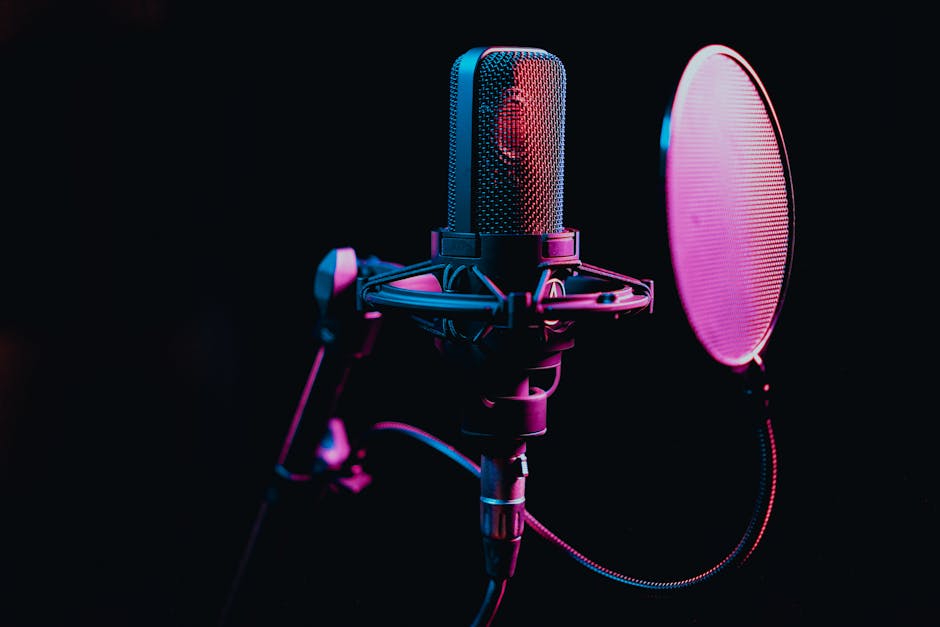My In-depth Review: Rode Nt-usb Mini Vs. Blue Yeti (best Microphones for Beginners).
My In-depth Review: Rode NT-USB Mini Vs. Blue Yeti (best Microphones for Beginners)
Embarking on your journey into podcasting, streaming, voiceovers, or even just clearer online calls means one thing is paramount: good audio. But for beginners, the world of microphones can feel like a minefield of technical jargon and endless options. Two names consistently rise to the top of recommendations for newcomers: the Rode NT-USB Mini and the Blue Yeti. Both are incredibly popular USB microphones, praised for their simplicity and solid performance. But which one is truly the best microphone for beginners, and more importantly, which one is right for your specific needs?
Having personally tested and used both of these microphones extensively in various beginner-friendly scenarios, I’ve gained a deep understanding of their strengths and weaknesses. This in-depth review isn’t just about specs; it’s about real-world experience, ease of use, and what truly matters when you’re just starting out. We’ll cut through the noise to help you make an informed decision, ensuring your first foray into quality audio is a success.
Navigating the First Steps: Why the Rode NT-USB Mini and Blue Yeti Dominate the Beginner Scene
Before we dive into the nitty-gritty of each microphone, it’s crucial to understand why these two particular models have become such staples for beginners. The answer lies in their fundamental design: they are USB microphones. This means they connect directly to your computer with a single USB cable, bypassing the need for complex audio interfaces, XLR cables, or phantom power supplies. For someone just starting, this plug-and-play simplicity is a game-changer. It lowers the barrier to entry significantly, allowing you to focus on your content rather than your audio engineering setup.
The Rode NT-USB Mini, hailing from a brand renowned for professional audio equipment, brings a touch of studio quality to a compact, user-friendly package. It promises clear, focused sound without a complicated setup. On the other hand, the Blue Yeti has been a reigning champion in the beginner space for years, largely due to its versatility and robust feature set, often being the first “serious” microphone many aspiring creators purchase. Both offer distinct advantages, but their appeal to beginners is universally tied to their straightforward operation and impressive audio capabilities right out of the box.
First Impressions & Form Factor: Which Mic Fits Your Beginner Setup Better?
When you’re a beginner, the physical presence of your microphone matters. Is it too bulky? Does it sit well on your desk? Is it easy to move around? Let’s break down the initial impressions and form factors of the Rode NT-USB Mini and the Blue Yeti.
The Compact Contender: Rode NT-USB Mini’s Design and Build
The Rode NT-USB Mini lives up to its name. It’s incredibly compact, fitting comfortably in the palm of your hand, and boasts a sleek, minimalist design. Its all-metal construction gives it a premium, durable feel that inspires confidence. It comes with a high-quality, magnetic desktop stand that’s surprisingly stable despite its small footprint. This stand is also detachable, revealing a standard thread for boom arms, which is a fantastic feature for future upgrades.

Its small size makes it exceptionally portable – you can easily toss it into a bag and set it up anywhere. For beginners with limited desk space or those who frequently move their setup, this is a huge advantage. The microphone connects via USB-C, which is modern and reversible, adding to its user-friendly appeal. There’s just one control: a headphone volume dial on the front, keeping things incredibly simple.
The Feature-Rich Giant: Blue Yeti’s Design and Build
The Blue Yeti, in stark contrast, is a much larger and heavier microphone. It has a distinctive, retro-inspired design that many find appealing. It’s built like a tank, with a substantial metal body that feels incredibly robust. It also comes with an integrated desktop stand, which is sturdy but takes up a considerable amount of desk real estate. The stand is hinged, allowing you to tilt the microphone for optimal positioning, but it’s not as easily detachable or adaptable as the Rode Mini’s.
While its size can be a drawback for small desks or portability, the Yeti’s larger form factor accommodates more on-board controls. It features a gain knob, a mute button, and a headphone volume control, along with a crucial pattern selection knob (more on this later). These physical controls offer immediate adjustments without needing to dive into software settings, which some beginners might appreciate for quick tweaks.
Dissecting the Sound: Audio Quality for Aspiring Creators
Ultimately, a microphone’s primary purpose is to capture your voice clearly. For beginners, “good audio quality” often translates to sounding clear, present, and free from distracting background noise, without requiring extensive post-processing.
Rode NT-USB Mini: Crisp Clarity and Focused Sound for Solo Endeavors
The Rode NT-USB Mini excels at capturing clear, crisp audio with a focused sound profile. It’s a condenser microphone with a cardioid polar pattern, meaning it primarily picks up sound from directly in front of it and rejects sound from the sides and rear. This is ideal for solo content creators – podcasters, streamers, voiceover artists, or musicians recording vocals or acoustic instruments – sitting directly in front of the mic.
In my tests, the NT-USB Mini consistently produced a warm yet articulate sound. Voices sound natural and present, making it excellent for dialogue. Its off-axis rejection is quite good for a USB mic, helping to minimize ambient room noise like keyboard clicks or distant chatter, provided your environment isn’t overly noisy. For a beginner, this “set it and forget it” sound quality is incredibly valuable, as it means less time spent on audio editing and more time creating.
Blue Yeti: Versatility with Patterns, but Demands More Attention
The Blue Yeti’s claim to fame in the audio quality department is its versatility, thanks to its multiple polar patterns: cardioid, stereo, omnidirectional, and bidirectional. This means it can adapt to various recording scenarios:
- Cardioid: Best for solo recording, similar to the Rode Mini.
- Stereo: Captures a wider soundstage, good for instruments or immersive soundscapes.
- Omnidirectional: Picks up sound from all directions, perfect for group discussions or ambient recordings.
- Bidirectional: Ideal for two-person interviews facing each other.
This versatility can be a huge asset for beginners who might explore different types of content. However, with great power comes great responsibility. The Yeti’s larger diaphragm and multiple patterns can make it more susceptible to picking up room reflections and background noise if not used correctly. Its sound can sometimes be perceived as slightly less “polished” or “focused” than the Rode Mini’s out-of-the-box, often requiring more careful gain staging and placement to achieve optimal results. For a beginner, this might mean a steeper learning curve to get truly professional-sounding audio, especially in untreated rooms.
Beyond the Box: Essential Features and Ease of Use for Novices
Beyond sound quality and physical design, the practical features and overall ease of use are paramount for beginners. You want a microphone that gets out of your way and lets you create.
Seamless Setup and Monitoring: Rode NT-USB Mini’s Simplicity
The Rode NT-USB Mini is the epitome of plug-and-play. Connect the USB-C cable to your computer, and it’s recognized instantly by Windows, macOS, and even some Linux distributions, without needing any special drivers. This immediate functionality is a dream for beginners.
- Headphone Monitoring: It features a 3.5mm headphone jack with zero-latency monitoring, meaning you hear your voice in real-time without any annoying delay. This is crucial for maintaining proper




Post Comment